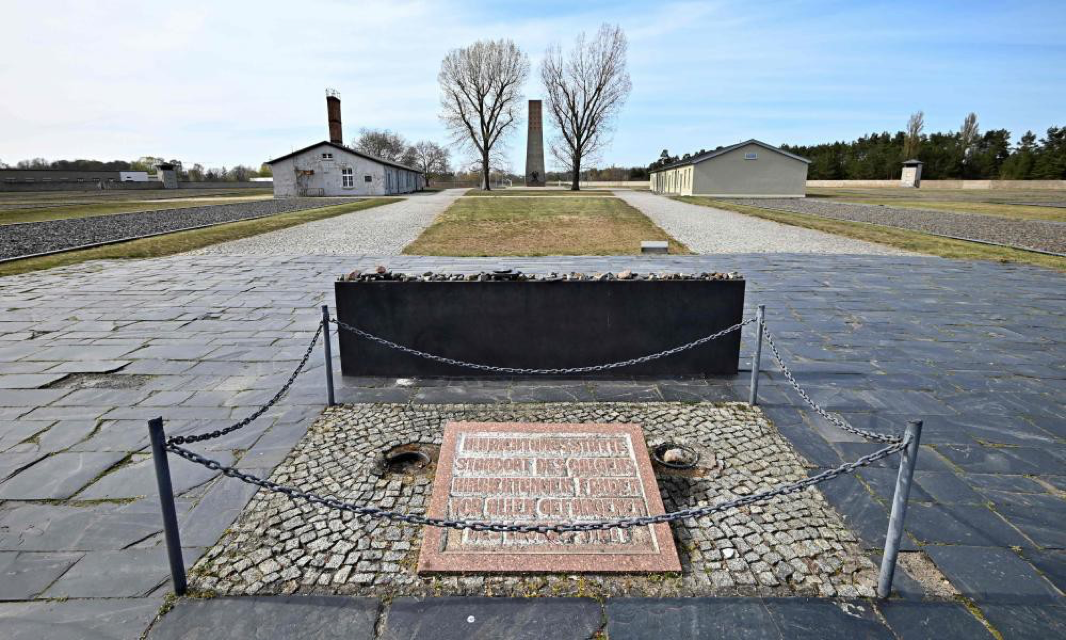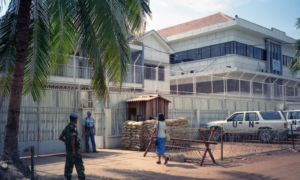Man deemed fit to stand trial in Germany and is accused of complicity in murder of more than 3,500 people
A 100-year-old former concentration camp guard will stand trial in Germany in October accused of complicity in 3,518 murders, public prosecutors have announced.
The prosecutor’s office in Neuruppin, which first brought the charges in February, received a medical assessment that confirmed the man was “fit to stand trial” despite his advanced age.
Hearings will be limited to two and a half hours a day, according to prosecutors.
The suspect is accused of “knowingly and willingly” assisting in the murder of prisoners at the Sachsenhausen camp in Oranienburg, north of Berlin, between 1942 and 1945.
He is accused notably of complicity in the “execution by firing squad of Soviet prisoners of war in 1942” and the murder of prisoners “using the poisonous gas Zyklon B”.
The defendant, who was not named in line with German privacy laws, is said to live in the state of Brandenburg outside Berlin, local media reported.
Thomas Walther, a lawyer representing a number of the victims in the case, told the German newspaper Welt am Sonntag: “Several of the co-complainants are just as old as the accused and expect justice to be done.”
Sachsenhausen was established in 1936 as the first new camp after Adolf Hitler gave the SS full control of the Nazi concentration camp system. It was intended to be a model facility and training camp for the network the Nazis built across Germany, Austria and occupied territories.
More than 200,000 people were held there between 1936 and 1945. Tens of thousands of inmates there died of starvation, disease, forced labour and other causes, as well as through medical experiments and systematic SS murder operations including shooting, hanging and gassing.
Exact numbers on those killed vary, with upper estimates of about 100,000, although scholars suggest figures of 40,000 to 50,000 are probably more accurate.
In its early years, most prisoners were either political prisoners or criminal prisoners, but also included some Jehovah’s Witnesses and gay people. The first large group of Jewish prisoners was brought there in 1938 after the Night of Broken Glass, or Kristallnacht, an antisemitic pogrom.
During the war, Sachsenhausen was expanded to include Soviet prisoners of war – who were shot by the thousands – as well as others.
Like in other camps, Jewish prisoners were singled out for particularly harsh treatment, and most who remained alive by 1942 were sent to the Auschwitz death camp.
Germany has been hunting down former Nazi staff since the conviction of John Demjanjuk in 2011, on the basis that camp guards served as part of the Nazi killing machine, set a legal precedent.
Since then courts have handed down several guilty verdicts on those grounds rather than for murders or atrocities directly linked to the individual accused.
In July, German authorities confirmed they were investigating a 95-year-old man for his role as a Nazi guard at a prisoner of war camp where many Soviet soldiers died.
A 96-year-old woman will go on trial in late September in the northern German town of Itzehoe.
The woman, who allegedly worked during the war as the secretary for the SS commandant of the Stutthof concentration camp, has been charged with more than 10,000 counts of accessory to murder earlier this year.
Her case and the charges against the 100-year-old suspect both rely on recent legal precedent in Germany establishing that anyone who helped a Nazi camp function can be prosecuted for accessory to the murders committed there.




